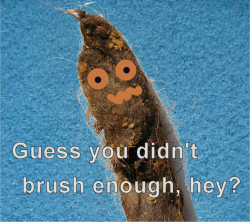Everything your cat doesn't want you to know about shedding

I'm just a hairy guy
I'm hairy noon and night
Hair that's a fright
I'm hairy high and low
Don't ask me why
(Hair, the musical 1990)
How much hair does a cat actually shed? The quick answer is 'all of it, eventually'. And the cat sheds it twice a year, as well. Any human who shares space with a cat knows that cats shed hair. Lots of hair, apparently unnatural amounts of hair, hair that gathers under the bed, clumps itself into clouds on the kitchen lino, and weaves itself inextricably into the lounge carpet. Can this be controlled? And how much shedding is too much shedding? Can a cat shed too little hair? This article will tell you things that your furry friend would rather you didn't know about the whole process.
Firstly, why do cats shed hair? There are actually two reasons for this. The first is that hair is a living organ – hairs grow, age, die and fall out. This doesn't just happen with cats, so don't blame kitty for all the hair clumping around the place. You yourself contribute between 70-150 hairs a day. Shedding a certain amount of hair is a natural process that happens with almost all mammals – so getting rid of your cat and getting a dog won't solve the problem, because dogs shed too. In fact they're better at it, because, generally being larger, they have a bigger surface area to shed hair from.
There's another reason why cats shed hair too – cats are generally evolved for a temperate climate and so they grow a summer and a winter coat. Your vet will tell you that the photoperiod triggers a telogen phase in your cat. That translates as 'when the days get shorter and colder, your cat's body reacts to the decreasing amount of light by dumping her summer coat and growing a denser, warmer winter coat.' Come spring, and the longer days mean that the process works the other way, and a lot of what was once keeping your cat warm turns up on your sweaters, sofas, toothbrush and everywhere else.
Once upon a time cats were outdoor creatures, and apart from normal hair replacement, major shedding happened just twice a year on an intense 4-6 week cycle. However, modern lighting and air conditioning have confused the metabolism of many cats into shedding pretty much all year round. The more your cat is an indoor cat, and the less natural light she gets, the more this will happen.
This is one reason why cats such as the Cornish Rex are popular breeds. Your average cat has several kinds of hair. Here we are mainly concerned with the short soft hair called 'down' and the longer (sometimes much longer) outer hairs called 'guard hairs'. Due to a genetic aberration, Rexes do not have guard hairs, and therefore they only shed down, which is both short and less prone to seasonal replacement. (However, this makes Rexes only slightly more useful to the allergy-prone, because the allergens are due to saliva and skin cells – a combination called 'dander' and Rexes produce their fair share of that. The only difference is that there is less shed cat hair wafting about to leave dander even where the cat isn't.)
So we've agreed that your cat will shed, and shed a lot. Why would your cat not want you to know that? Because there's things you can do about it. You'll never solve the problem but you can mitigate it a lot. Here's how.
First, brush your cat. Even a short-hair cat benefits from regular grooming, because a proper brush (get it from your vet or pet store) gently works loose hairs that would be shedding soon anyway. That leaves the hair stuck to the brush (or comb) instead of, well, everywhere else.

Secondly, if you have a healthy cat, you've got one of nature's narcissists on your hands. Many cats will spend half their waking time grooming themselves. Have you noticed how your cat's tongue feels sandpapery? That's because it has lots of tiny hooks. These pull loose hair off the cat's coat during the grooming process, and when the cat swallows those hairs go right into her stomach.
So if you aren't the first to groom the loose hairs off your cat, the cat will groom them off for herself. Later, she'll nosily regurgitate the hair in hairballs (furballs), giving you all the joy of the original loose hair, but with extra saliva and other unspeakable substances mixed in. There is a common but unsubstantiated theory that cats work out your route to the bathroom at night, and deposit the hairballs on the floor at strategic points en route. Brushing helps with hairballs, because a well-brushed cat often passes whatever hairs she does ingest with her feces, so that loose hair goes straight to the litter tray.
Also, not all shed hair makes it off an unbrushed cat's back. Some loose hair is so entangled with healthy hair that it remains in the coat, making the mass of hair that much thicker, and that much harder for the next shed hair to fall off. Eventually this causes mats. (This is not the only reason for mats, but it is a common one.) The mat sat on the cat is bad news. The skin under the mat can't breather properly and becomes irritated. The mat doesn't help the mood of the rest of the cat either, so your pet will become more anti-social and less loving.
So brushing is the answer. But unless your cat is an exception, she won't like it. Though humans like to stroke a cat for minutes on end, most cats actually prefer a quick rub on the head every now and then. Being stroked for minutes on end by an alien abject such as a brush really bugs a cat that is not used to it. Even when the cat becomes used to it, expect her to make a break for freedom when she gets the chance, and if the brushing goes on too long, expect an active rebellion.
From the cat's point of view the news gets even worse. If brushing alone fails to help – though a regular weekly brushing works wonders in most cases – you might consider a bath. You'll have to work the cat up to tolerating a full bath, and some cats will never take it, but again, this is a good method of removing lots of hair that would otherwise be shed all over the place. (Note by the way that bathing and brushing also have the advantage of combating parasites and dirt in fur, though you'll need to fight parasites in other ways as well.)
If the shedding is extreme, and the cat ingests so much hair that this becomes a health threat then your vet might even suggest shaving the cat. Note the words 'the vet' in that last sentence. If your cat is shedding excessively, sometimes to the point of developing bald patches, this is probably a symptom of something more serious. Furthermore shaving a cat at home is dangerous, cruel, stressful for all involved, and likely to lead to injuries among the parties concerned. Don't try this at home, folks.
Also work with your vet if you are thinking of using a spray. This is emphatically not a sort of hairspray for cats, as that not only causes mats and irritation in the long run but does not actually solve the problem, since the hair has eventually to go unless you want your cat expanded to the size of a furry beach-ball. Many sprays involve omega oils, since omega oils usually make a positive contribution to a cat's diet and the cat will lick the sprayed area and ingest the oil. A proper amount of omega-3 keeps a cat's coat healthy, and healthy hair drops off less, so the sprays do work.
On the other hand, giving your cat a healthy-well balanced diet rich in essential oils works too. That way you not only have a cat that sheds less (but still lots, unfortunately) but you also have one part of the solution that you and your cat can probably agree on.
